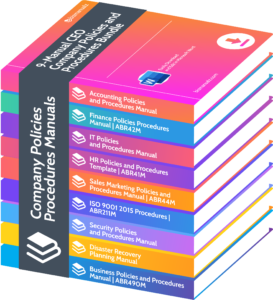COO Strategies Driving Business Process Reengineering

As a COO, you are responsible for overseeing the operational aspects of your company and ensuring its success. However, in today’s fast-paced business world, strategies and processes need to constantly evolve in order to stay competitive. This article will delve into the importance of business process reengineering and how it can drive meaningful change and growth within your organization. Be prepared to challenge the status quo and take your company to new heights. COO Strategies Driving Business Process Reengineering.
What is Business Process Reengineering ?
Business Process Reengineering (BPR) is the process of analyzing and redesigning workflow within and between enterprises in order to improve efficiency, quality, and customer satisfaction.
This involves a fundamental rethinking of existing processes in order to achieve significant improvements, such as through the use of technology or restructuring of organizational resources.
Why is BPR Important for COOs?
Business Process Reengineering (BPR) is essential for COOs as it promotes operational efficiency, reduces costs, and increases agility.
By implementing BPR, COOs can streamline workflows, optimize resource allocation, and improve competitiveness. Through rethinking and redesigning processes, COOs can align operations with strategic goals, quickly respond to market changes, and enhance overall performance.
BPR plays a vital role for COOs in fostering innovation, adapting to changing business environments, and achieving sustainable growth.
How Can BPR Help Improve Business Efficiency?
BPR can help improve business efficiency in the following ways:
-
- By optimizing workflows and eliminating redundant tasks
- Through the integration of technology to streamline operations
- By standardizing processes for consistency and quality
- Implementing performance metrics to monitor and enhance efficiency
How Can BPR Help Reduce Costs?
- Reducing Redundancies: BPR identifies and eliminates redundant processes, which in turn helps reduce operational costs.
- Optimizing Workflow: By streamlining operations and introducing automation technologies, BPR can effectively lower labor and operational costs.
- Resource Reallocation: BPR can identify inefficiencies and help with effective resource reallocation, ultimately optimizing costs.
- Supplier Management: BPR also facilitates strategic partnerships with suppliers, which can lead to lower procurement costs.
What are the Steps for Implementing BPR?
Business process reengineering (BPR) has become a popular strategy for organizations looking to improve their efficiency and effectiveness. But what are the key steps for successfully implementing BPR?
In this section, we will break down the process into four main steps: identifying processes to reengineer, analyzing current processes, redesigning processes, and implementing changes. By understanding each of these steps, you can better prepare for a successful BPR implementation and drive positive change in your organization.
1. Identify Processes to Reengineer
- Examine current processes to pinpoint inefficiencies and bottlenecks and identify areas for reengineering.
- Analyze customer feedback and internal data to determine specific processes that need improvement.
- Assess the impact of reengineering processes on overall business performance to ensure positive results.
- Engage cross-functional teams to gather diverse insights and perspectives on potential processes to reengineer.
2. Analyze Current Processes
- Identify the processes currently in place within the organization.
- Document the steps involved in these processes.
- Analyze the current processes to determine their efficiency and effectiveness.
- Identify any bottlenecks, redundancies, or areas for improvement within the processes.
3. Redesign Processes
- Evaluate current processes to identify inefficiencies and bottlenecks.
- Collaborate with relevant stakeholders to gather insights and feedback on process improvement.
- Redesign processes by generating multiple options and assessing their potential impact on efficiency and cost.
- Utilize process mapping and workflow analysis to visualize new process designs.
- Implement pilot tests for the redesigned processes to gather real-world performance data.
4. Implement Changes
- Evaluate the impact of proposed changes on existing processes and identify potential risks.
- Communicate changes clearly to all stakeholders and provide necessary training and support.
- Implement changes gradually, starting with smaller processes to minimize disruption and effectively carry out the fourth step of the process: Implement Changes.
When implementing changes, it’s essential to consider the potential impact on existing operations, communicate effectively with all involved parties, and introduce changes gradually to ensure a smooth transition.
What are Some Common COO Strategies for BPR?
When it comes to business process reengineering (BPR), the role of the Chief Operating Officer (COO) is crucial. As a key decision-maker, the COO must determine the most effective strategies for optimizing business processes and driving overall efficiency.
In this section, we will discuss some of the common COO strategies for BPR, including streamlining processes, automating processes, outsourcing processes, and introducing new technologies. By understanding these strategies, COOs can make informed decisions to propel their company towards success.
1. Streamlining Processes
- Identify the processes that can be simplified or optimized to enhance efficiency.
- Analyze the current workflow to pinpoint bottlenecks or inefficiencies that can be eliminated.
- Redesign the streamlined processes by reevaluating and restructuring the workflow for optimal performance.
- Implement the changes systematically, ensuring seamless integration and minimal disruption.
Implementing COO strategies for streamlining processes can greatly improve operational efficiency and drive sustainable business growth.
2. Automating Processes
- Evaluate Processes: Identify tasks suitable for automation, such as data entry or report generation.
- Choose Automation Tools: Select software or hardware solutions tailored to the specific tasks and business needs.
- Integration: Ensure seamless integration of automated processes with existing systems to avoid disruptions.
- Training: Train employees on using the automated tools effectively and address any concerns or challenges.
- Monitoring and Optimization: Regularly monitor automated processes, analyze performance, and make necessary adjustments for efficiency.
3. Outsourcing Processes
- Identify non-core processes suitable for external management.
- Analyze the cost-benefit ratio of outsourcing specific functions.
- Assess potential outsourcing partners for expertise and reliability.
- Implement robust communication channels for seamless collaboration.
- Pro-tip: When outsourcing processes, prioritize building strong partnerships with service providers to ensure alignment with your business objectives and quality standards.
4. Introducing New Technologies
Introducing new technologies is essential for modernizing business operations. COOs utilize advanced software, AI, and IoT to optimize processes, improve decision-making, and increase productivity. According to a survey by Gartner, by 2023, 65% of COOs are projected to incorporate robotic process automation to drive operational excellence.
What are the Benefits of Using COO Strategies for BPR?
When it comes to business process reengineering (BPR), utilizing COO strategies can greatly enhance its effectiveness. These strategies, implemented by the Chief Operations Officer (COO), aim to streamline and optimize the operations of a company.
In this section, we will discuss the various benefits of using COO strategies for BPR, including increased efficiency, cost savings, improved quality, and enhanced customer experience. By understanding these advantages, businesses can see the value in incorporating COO strategies into their BPR efforts.
1. Increased Efficiency
- Streamlining processes to increase efficiency by eliminating bottlenecks and inefficiencies.
- Automating tasks to reduce manual errors and accelerate operations and ultimately increase efficiency.
- Outsourcing non-core activities to specialized firms for optimized execution and increased efficiency.
- Introducing new technologies such as AI and RPA to enhance productivity and increase efficiency.
2. Cost Savings
- Utilize lean manufacturing processes to decrease material waste and save on costs.
- Streamline supply chain management to reduce inventory expenses.
- Incorporate energy-efficient technologies to lower utility costs.
- Consolidate redundant business functions to eliminate duplicative expenses.
Pro-tip: Before implementing cost-saving measures, conduct a comprehensive cost-benefit analysis to ensure sustainable long-term savings.
3. Improved Quality
- Implement thorough quality control measures to ensure improved quality.
- Train employees to prioritize precision and accuracy in their work.
- Use customer feedback to identify areas for improvement in quality.
- Implement technology to enhance quality monitoring and assurance processes.
4. Enhanced Customer Experience
- Personalized Interactions: Tailoring services to enhance the customer experience by meeting individual needs and preferences.
- Seamless Multichannel Experience: Ensuring consistent service quality across all touchpoints to provide a smooth and efficient customer experience.
- Rapid Issue Resolution: Efficiently resolving customer problems and complaints to improve the overall customer experience.
- Proactive Communication: Keeping customers informed about relevant updates and offerings to enhance their experience with the company.
Frequently Asked Questions

What is the role of the COO in driving business process reengineering?
The COO, or Chief Operating Officer, is responsible for overseeing the day-to-day operations of a company. In terms of business process reengineering, the COO plays a crucial role in identifying areas for improvement, developing new strategies, and implementing changes to streamline processes and increase efficiency.
What are some common strategies used by COOs to drive business process reengineering?
Some common COO strategies for driving business process reengineering include workflow analysis, automation, standardization, and cross-functional collaboration. These techniques can help identify bottlenecks, eliminate redundancies, and improve overall business processes.
How can business process reengineering benefit a company?
Business process reengineering can bring numerous benefits to a company, such as increased efficiency, reduced costs, improved customer satisfaction, and faster time to market. By streamlining processes and removing unnecessary steps, companies can become more agile and responsive to changing market conditions.
What are some challenges that companies may face when implementing business process reengineering?
Implementing business process reengineering can be a complex and challenging task. Some common challenges include resistance to change from employees, lack of support from upper management, difficulties in identifying and prioritizing processes for improvement, and insufficient resources or budget.
How can a COO determine which processes are in need of reengineering?
The COO can start by conducting a thorough analysis of the company’s existing processes. This can include gathering data, reviewing workflows, and soliciting feedback from employees. From there, the COO can prioritize which processes need the most attention and develop a plan for reengineering.
What are some tips for successfully implementing business process reengineering?
Some tips for successful implementation of business process reengineering include gaining buy-in from all levels of the organization, communicating changes effectively, providing training and support for employees, and continuously monitoring and adjusting processes as needed. It’s also important to have a clear understanding of the company’s goals and objectives to ensure that the reengineering efforts align with overall business strategy.

















Leave a Reply